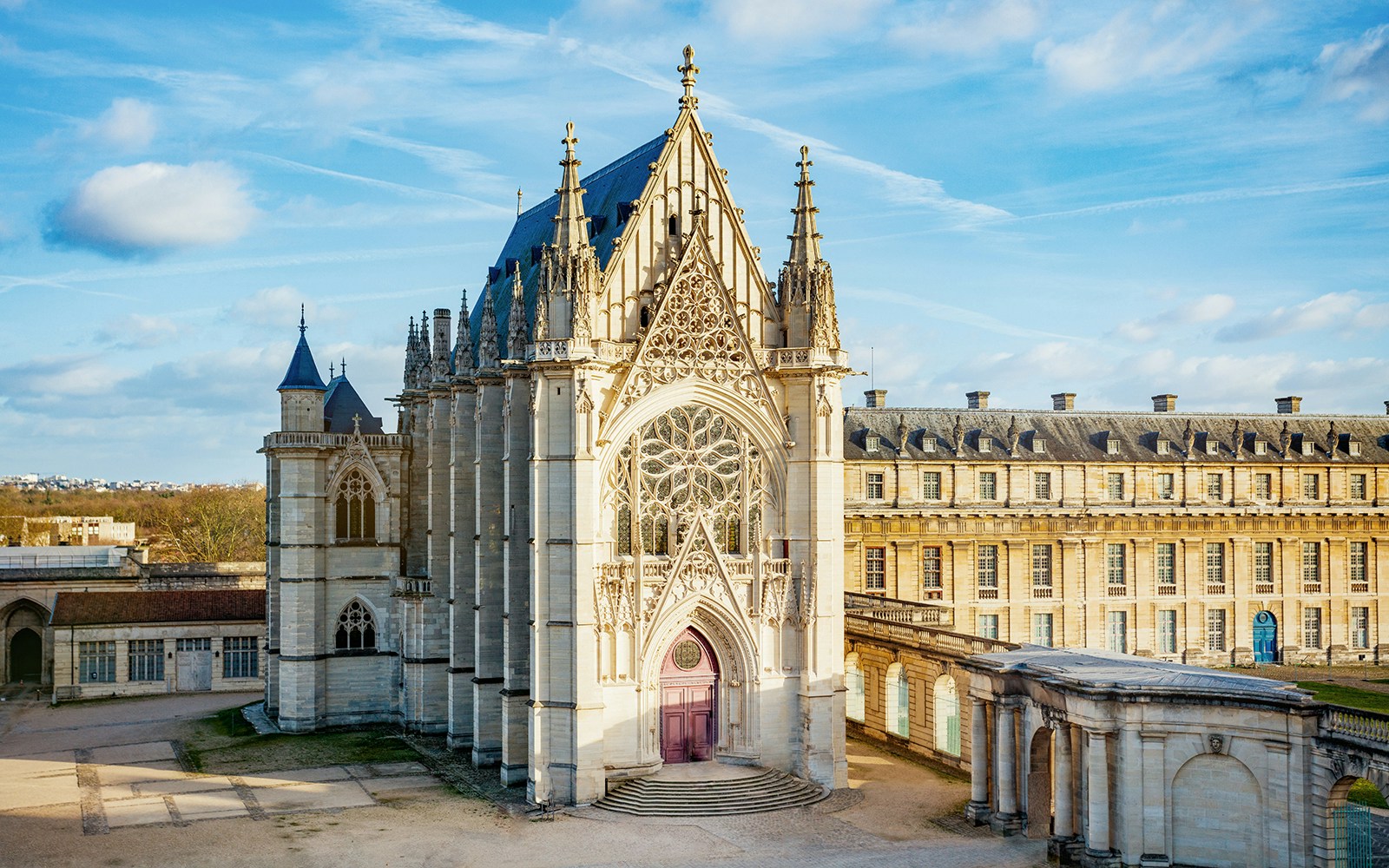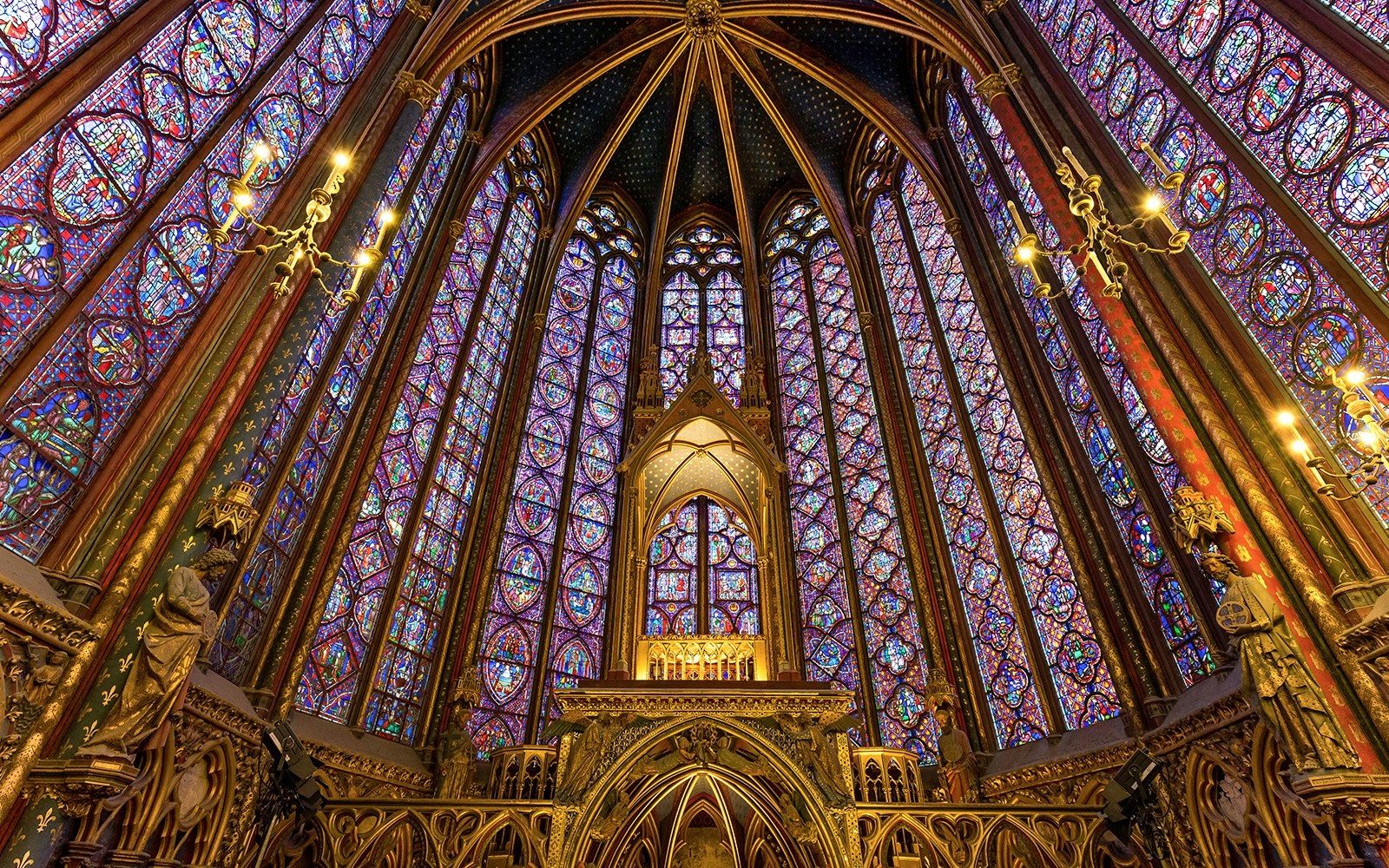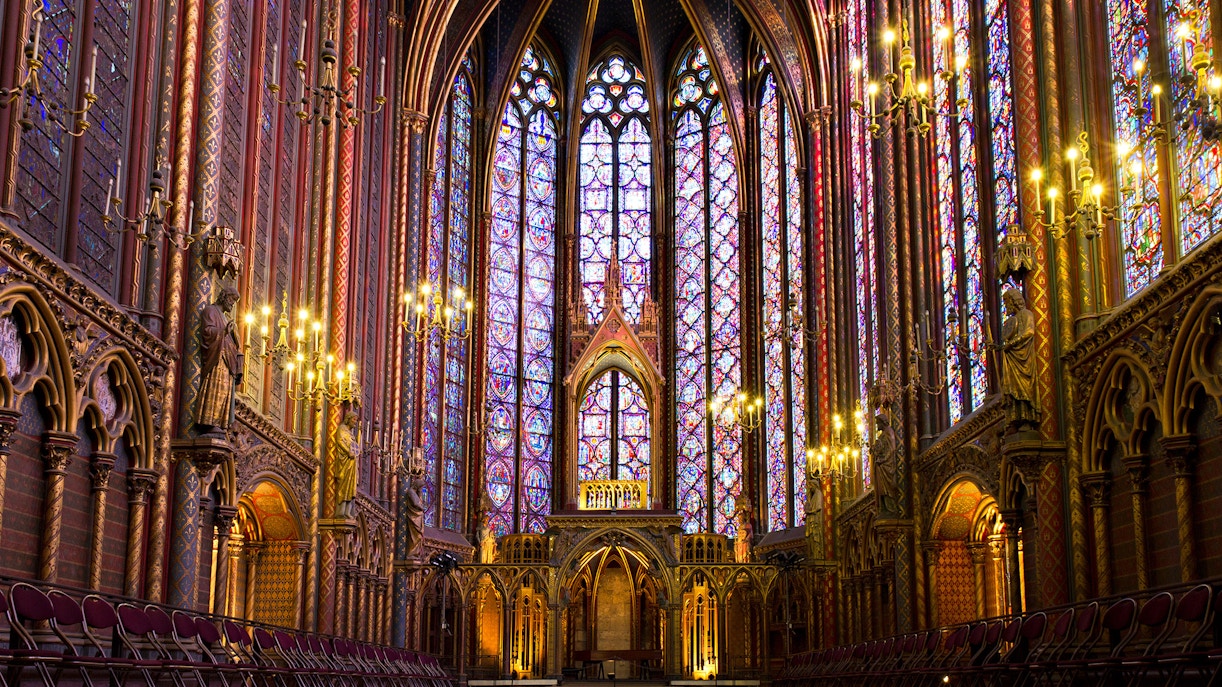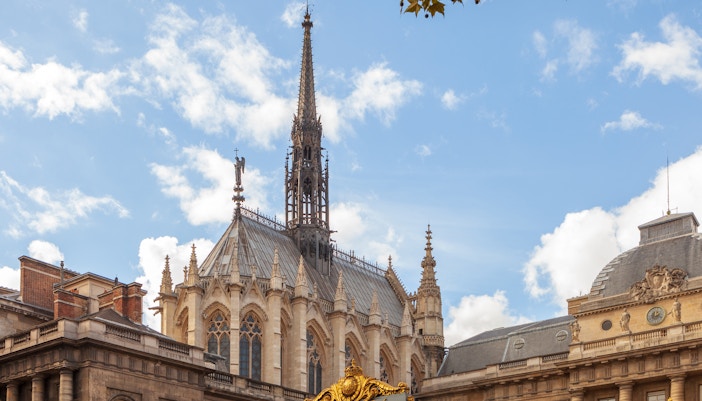The architecture of Sainte-Chapelle is a masterpiece of Rayonnant Gothic style, characterized by its emphasis on height, light, and intricate detail. Built in the 13th century, it features a two-level structure: the lower chapel, with a starry-vaulted ceiling and vibrant colors, served palace staff, while the upper chapel, reserved for royalty, dazzles with its towering stained glass windows. These windows, covering over 600 square meters, depict over 1,100 biblical scenes in vibrant hues, creating a kaleidoscope of light.
The chapel’s delicate stonework, slender columns, and intricate carvings contribute to a sense of ethereal weightlessness, while the rose window, added in the 15th century, showcases flamboyant Gothic design. Sainte-Chapelle’s innovative architectural techniques and artistic splendor make it one of the finest achievements of medieval craftsmanship.











